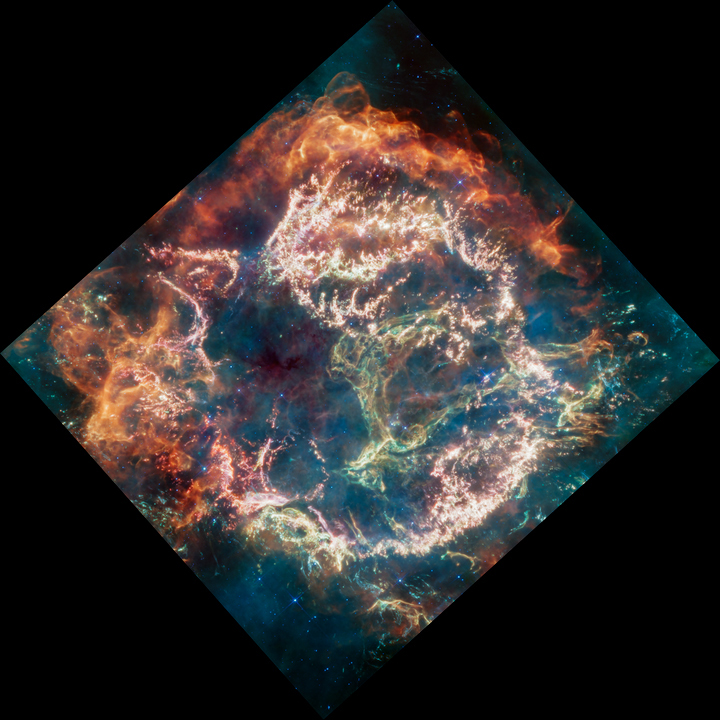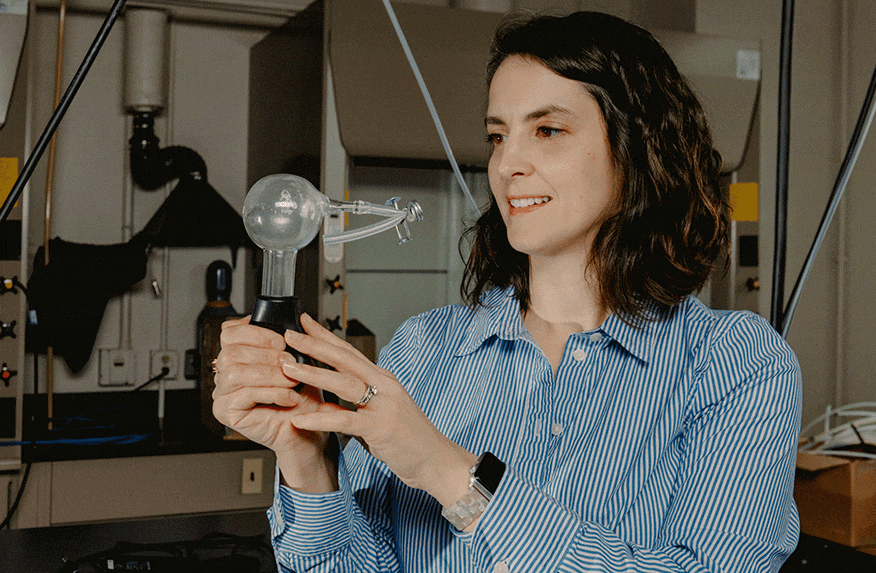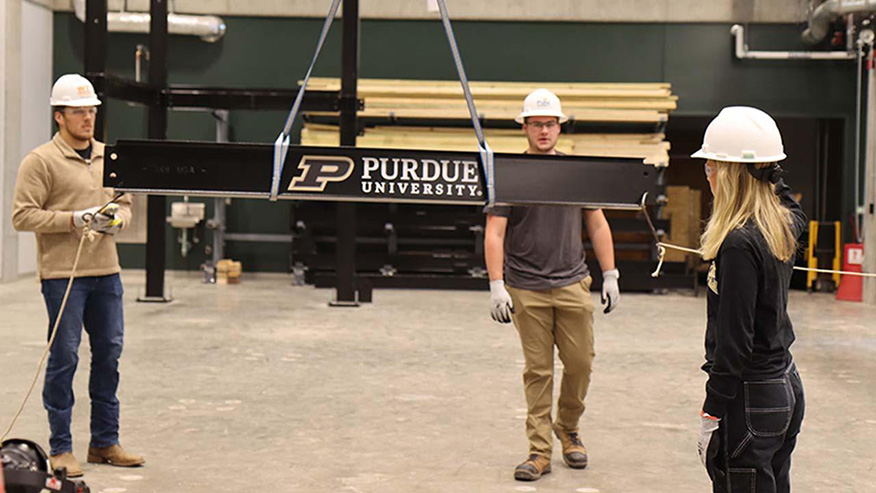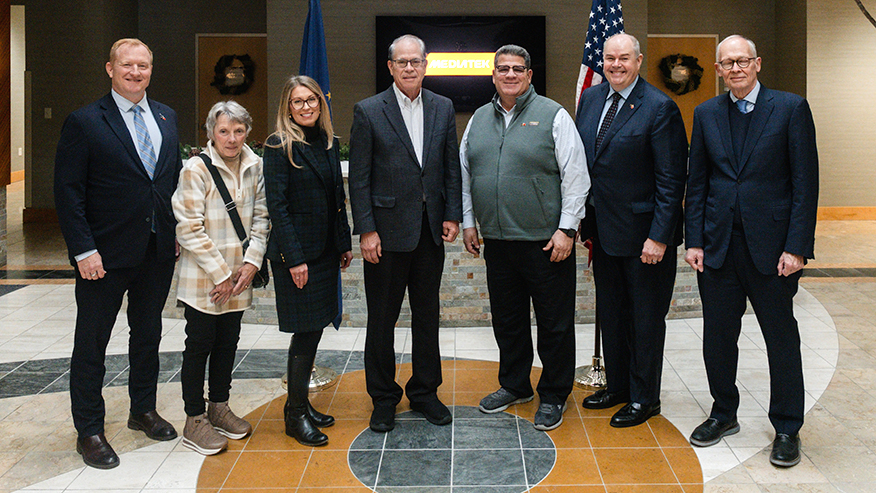Discover Purdue’s latest and greatest in space sciences
Space scientists are the boots on the ground of space exploration, and Purdue’s researchers are among the most elite.

Featured in First Lady Jill Biden’s virtual Advent calendar, images of Cassiopeia A attributed in part to Danny Milisavljevic’s Purdue team, offer renewed interest with each analysis. (NASA, ESA, CSA, Danny Milisavljevic at Purdue University, Tea Temim at Princeton University, Ilse De Looze at UGent / image processing by Joseph DePasquale at STScI.)
Celebrate the wonder of space with this collection of the most recent and impactful news from Purdue University’s space research labs.

Icy impacts: Gauging thickness of ice on Europa brings science closer to finding possibility of life
Europa, one of Jupiter’s rocky moons, is home to huge saltwater oceans and thought to be a potential home to nonterrestrial life — but this search for life is dependent on scientists knowing the depth of the icy shell encasing Europa’s entire surface.
Brandon Johnson’s lab has been able to determine the depth of that shell using his expertise in crater modeling.
Scientist: Brandon Johnson, associate professor of planetary science, “Impact Cratering”
Rover captures a Martian eclipse. Perseverance team lead at Purdue explains
The Perseverance rover recently captured images of a solar eclipse on Mars. In this video, Briony Horgan explains the science behind eclipses on Mars, Earth and other planets — and why Earth’s eclipses are particularly special.
Scientist: Briony Horgan, associate professor of planetary science; tactical science lead with NASA on the Mars Perseverance rover mission, “Planetary Geology”

Association of American Universities — Featured Research
Cloudy science, clear insights: Atmospheric scientist studies clouds’ causes and effects
Alexandria Johnson’s expertise in cloud physics provides vital information to many fields, from the way microplastics are affecting weather patterns to the study of faraway exoplanets.
After the most powerful telescopes have reached across the universe, sometimes Johnson’s ability to parse an exoplanet’s own densely clouded sky is the best way to see what’s happening on the farthest of these celestial bodies.
“If we want to understand these enshrouded exoplanets, we need to understand the clouds. That understanding gives us insights into the atmospheric chemistry at work, atmospheric circulations and the climate of these exoplanets,” Johnson says.
Scientist: Alexandria Johnson, assistant professor of planetary science, “Planetary Atmospheres; Cloud Microphysics”
In the news
Popular Science: Where do all those colors in space telescope images come from? How scientists make vibrant spectacles out of grayscale blobs
Images of Cassiopeia A, captured by NASA’s James Webb Space Telescope and attributed to Purdue associate professor Danny Milisavljevic and his team, continue to hold our imagination.
Related: See Professor Milisavljevic talk about exploding supernovae, why the JWST is special and capturing “star stuff” on camera on “60 Minutes” in April 2023.
- NASA’s Webb stuns with new high-definition look at exploded star
- Stellar forensics: Clearest ever look at Cassiopeia A sheds light into the heart of an exploding star
Scientist: Danny Milisavljevic, associate professor of physics and astronomy, “Supernovae”
Purdue University is proud to be the Cradle of Astronauts and to showcase its wide-ranging and historic relationship with space exploration on the Purdue in Space hub.
Bonus story
Boilermakers get rare opportunity to conduct research at the Mars Desert Research Station in Utah
For two-week terms, teams commit to living in a compact habitat in Utah’s remote red dust desert — conserving their resources and conducting research designed to address real-life situations that future missions to Mars may face.
“To have something like MDRS, where you’re actually getting exposure to practical problems that some space missions would face, is a phenomenal opportunity,” says Jesus Meza Galvan, a PhD student in aerospace engineering.
About Purdue University
Purdue University is a public research institution demonstrating excellence at scale. Ranked among top 10 public universities and with two colleges in the top four in the United States, Purdue discovers and disseminates knowledge with a quality and at a scale second to none. More than 105,000 students study at Purdue across modalities and locations, including nearly 50,000 in person on the West Lafayette campus. Committed to affordability and accessibility, Purdue’s main campus has frozen tuition 13 years in a row. See how Purdue never stops in the persistent pursuit of the next giant leap — including its first comprehensive urban campus in Indianapolis, the new Mitchell E. Daniels, Jr. School of Business, and Purdue Computes — at https://www.purdue.edu/president/strategic-initiatives.
Writer/Media contact: Christy McCarter, mccarter@purdue.edu




